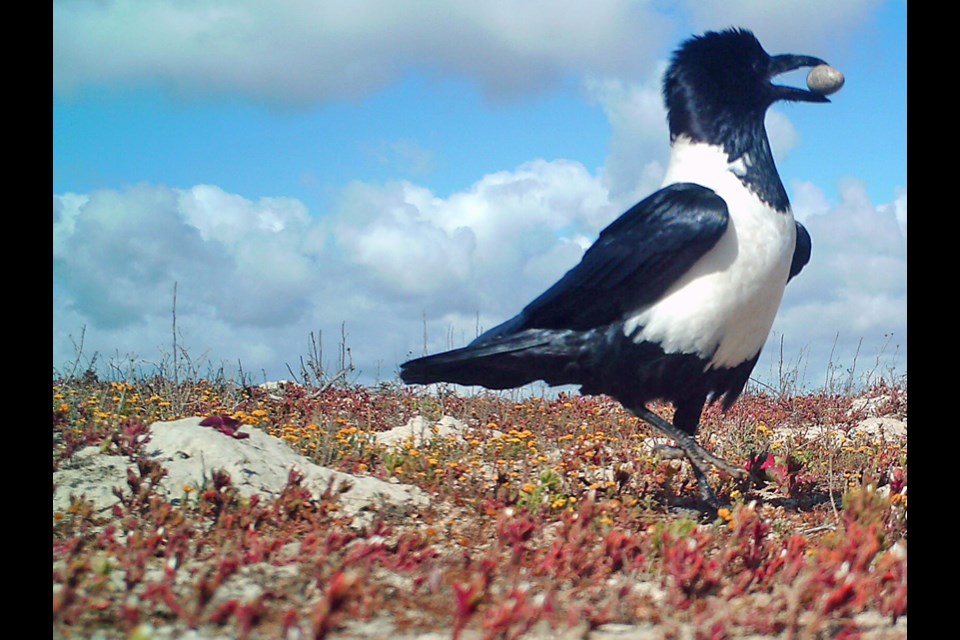Using a technique called conditioned food aversion, researchers from around the world were able to teach pied crows who had migrated to the Berg River estuary in South Africa to not eat the eggs of endangered bird species.
The study, which researchers hope will provide an improved framework for non-lethal types of predator control in numerous environments, was published in the Journal for Nature Conservation this week.
“We were really interested to see what kind of impacts crows were having in the environments they were spreading to in South Africa,” said Thomas Flower, a biology instructor at North Vancouver’s Capilano University who was one of the project leads.
Noting how human-caused environmental issues such as habitat loss, soil degradation and the climate crisis impact the movement and behaviour of species, Flower said that crows had largely moved into the Berg River area because of human actions – and it would take interventions by humans to stop them from eating the chicks and eggs of the local shorebird population.
“They’re able to invade and then they shift the dynamics of the environments they move into – and crows are really good at coping in human environments,” said Flower. “The crows are able to spread to these areas because people are there and they are building pylons which create nest sites, planting trees which provide nest sites, and they’re generating garbage as food.”
The study, which was largely undertaken in 2017, involved Flower and his co-researchers setting up artificial nests along the estuary that contained vomit-inducing eggs.
While some of the artificial nests contained placebos, researchers observed that after time pied crows who had ingested the fake eggs started to avoid all the nests in the area in general.
“In the future, they’ll avoid that food,” said Flower. “The crows weren’t going away. It seemed like the numbers stayed the same, and that suggested to us that the crows were indeed learning to avoid them, which is great because it means they’ll keep other crows from moving into the area but at the same time they’re not going to eat the eggs.”
Eventually, this should lead to more chicks of endangered shorebirds at the estuary, such as the chestnut-banded plover, surviving and ultimately bolstering that population, said Flower.
“There’s a good shot that this technique could be used to protect our breeding birds where they’re under threat from invasive species,” he said.
Conditioned food aversion is a non-lethal form of intervention that’s preferable to lethal methods of predator control because it maintains animal welfare and lets the invasive species remain in the environment without causing more damage to native species, according to Flower.
Crows in North America are particularly adept at thriving in an urban environment as well, noted Flower.
Moving forward with the support of the university’s Creative Activity Research and Scholarship fund, Flower said that he is now working with his students to explore why there are so many crows in Vancouver and what impacts they’re having on urban breeding birds.


